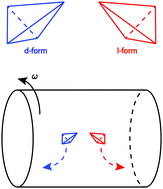Mechanical chiral resolution
Abstract
Mechanical interactions of chiral objects with their environment are well-established at the macroscale, like a propeller on a plane or a rudder on a boat. At the colloidal scale and smaller, however, such interactions are often not considered or deemed irrelevant due to Brownian motion. As we will show in this tutorial review, mechanical interactions do have significant effects on chiral objects at all scales, and can be induced using shearing surfaces, collisions with walls or repetitive microstructures, fluid flows, or by applying electrical or optical forces. Achieving chiral resolution by mechanical means is very promising in the field of soft matter and to industry, but has not received much attention so far.

- This article is part of the themed collection: Tutorial Reviews in Soft Matter


 Please wait while we load your content...
Please wait while we load your content...